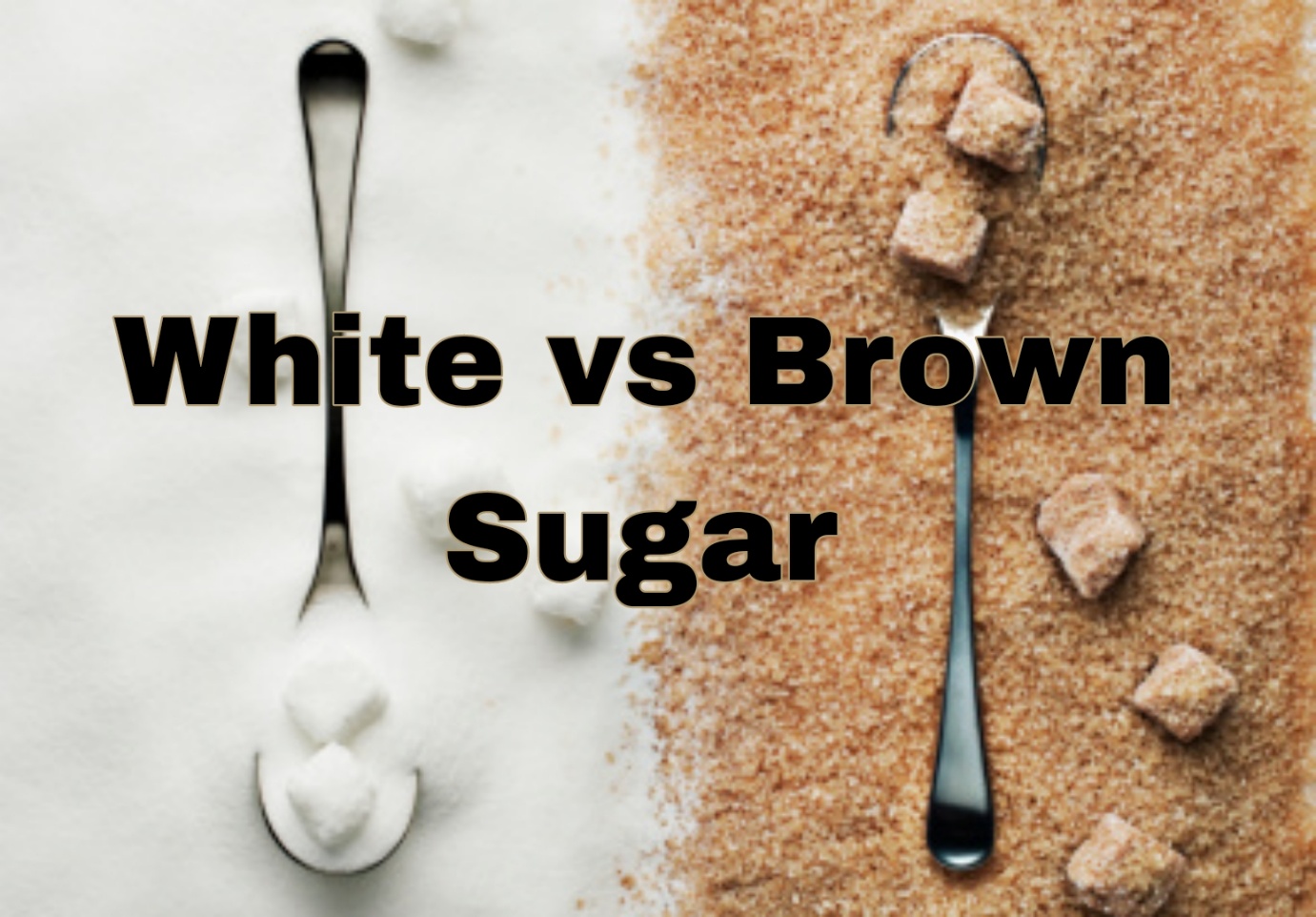White vs Brown Sugar | How many calories do 2 tbsp of brown sugar contain?
Are you here looking for 2 tbsp brown sugar calories? Well, brown sugar is a sweetener naturally obtained from sugar cane (Saccharum officinarum). Certainly, it is similar to white sugar but contains different amounts of molasses. Conditionally, brown sugar is available in two forms, firstly refined or secondly unrefined, but most brown sugar in the bakery section of supermarkets is refined. Other types of brown sugar, however, include turbinado sugar, muscovado sugar, and loose brown sugar.
Like all sugar, similarly, brown sugar contains calories and carbohydrates but lacks essential vitamins and minerals. You can typically include brown sugar in the diet importantly when consumed as part of a balanced diet.
Let’s have a look at 1 tbsp and also 2 tbsp brown sugar calories mainly in this article plus its benefits, adverse effects, and white vs brown sugar also.
1 tbsp. Brown Sugar Calories
USDA provided the following nutritional information largely for 1 teaspoon (4.6 g) of brown sugar.
| Serving Size | 1tbsp. |
| Calories | 17.5 |
| Fat: 0g | 0g |
| Sodium: | 1.3mg |
| Carbs | 4.5g |
| Dietary fiber | 0g |
| Sugar | 4.5g |
| Protein | 0g |
2 tbsp. Brown Sugar Calories
Here is the 2 tbsp brown sugar calories (9.2 g) and other nutritional facts according to USDA
NUTRITIONAL FACTS
| Serving Size | 2 tbsp. |
| Calories | 35 |
| Total Fat | 0g |
| Saturated Fat | 0g |
| Polyunsaturated Fat | 0g |
| Monounsaturated Fat | 0g |
| Cholesterol | 0mg |
| Sodium | 4mg |
| Total Carbohydrate | 8.95g |
| Dietary Fiber | 0g |
| Sugars | 8.85g |
| Protein | 0g |
| Vitamin D | – |
| Calcium | 8mg |
| Iron | 0.18g |
| Potassium | 32mg |
| Vitamin A | 0mcg% |
| Vitamin C | 0mg |
Note* Brown sugar (2 packed teaspoons) typically contains 35 calories. Take note that the % Daily Value (DV) represents the contribution of a nutrient entirely in a serving of food to the daily intake. Remember that 2000 calories per day are commonly for general nutritional advice.
Carbohydrate
Generally, carbohydrate is the main ingredient in brown sugar. One teaspoon of sweetener surely contains 17.5 calories, mainly all of which come from sugar. Virtually, brown sugar has no fiber or starch.
Primarily, brown sugar has a very low glycemic load, however, the glycemic load does take into account portion size. Therefore, consuming more than one teaspoon increases the expected glycemic load.
Fat
Overall, brown sugar has no fat. Moreover, 2 tbsp brown sugar calories don’t contain any fat.
Protein
Also, brown sugar does not provide any protein and even 2 tbsp brown sugar calories don’t give any type of protein.
Vitamins and Minerals
When consumed in normal amounts, brown sugar does not provide essential micronutrients. Regardless, large amounts of sugar can provide some.
Brown Sugar – Health Benefits & Concerns
Likewise, brown sugar ( carbohydrates ) usually delivers rare energy (glucose) to the body and also the brain. Glucose is the brain’s preferred energy source. Besides, consume sugar in moderation because excess carbohydrates are mainly fats.
Excessive sugar intake often results in increased risks of disease, including heart disease, type 2 diabetes, metabolic syndrome, and non-alcoholic fatty liver disease. However, some experts believe that consuming sugar at recommended levels does not increase the risk of disease.
According to the 2020-2025 USDA Dietary Guidelines, an end limit on sugar input is 10% of total calories per day. Remember that different people have different needs and that no recommended level is an exact science. Use the recommended amounts as a guide to see what works best for your body.
Side Effects
- Adding too much sugar, especially white sugar, merely has a downside. Additionally, people who consume too much sugar can also develop dental problems.
- In November 2015, the American Dental Association officially endorsed the World Health Organization (WHO). They have yet recommendation to limit added sugar consumption to less than 10% of daily calories.
- Particularly, the organization explains that added sugar, especially sugary drinks, promotes the growth of harmful bacteria and even acids in the mouth. This acid ultimately harms the teeth eventually resulting in cavities or erosion.
- Check the ingredient labels on packaged foods merely when choosing foods at the store.
- Beginning in January 2021, the U.S. The Food and Drug Administration (FDA) will require manufacturers to list “sugar” and “added sugars” on nutrition labels. Finally, diabetics should be very careful specifically with their sugar intake. People with type 1 or type 2 diabetes should have their blood sugar levels checked merely to avoid hyperglycemia.
- Carbohydrates, including brown sugar, can raise blood sugar quickly.
Varieties Of Sugar
There are verily light brown and dark brown varieties of brown sugar. Largely, brown sugar is very similar to muscovado sugar. Although, you can use these three sugars interchangeably in many recipes. Hence, nothing more different.
Light brown sugar is light caramel mainly in flavor and color too. Even, this variety is refined white sugar with a little molasses added. Merely, brown sugar is similar to white sugar, however addition of molasses is responsible for a darker color and deeper flavor. Muscovado sugar, also known as Barbadian sugar (unrefined cane sugar) that naturally contains molasses. Predominantly, it has the deepest flavor and is often used in savory dishes.
White Sugar vs Brown Sugar – Nutritional Difference
White and brown sugar are very similar because they come from the same crops. Though, Molasses slightly enhances their nutritional value and also gives them a dark color.
Still, the most notable nutritional difference between the two is that brown sugar is slightly higher in calcium, iron, and potassium. Further, brown sugar extremely contains very little of these minerals and is therefore not a good source of vitamins and minerals.
Entirely, brown sugar has fewer calories than white sugar, but the difference is minor.
Invariably, they are nutritionally similar apart from these minor differences. The main difference is the taste and color.
Food storage and safety
Undoubtedly, brown sugar never spoils, according to the USDA, but is best used within two years of opening. Once opened, it can be kept for 18 to 24 months if stored properly. Sugar manufacturers recommend buying brown sugar and consuming it within 6 months of opening for best quality.
Consistently, it is not recommended to store brown sugar in the refrigerator.




